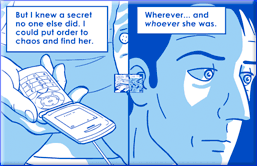Let me first off say that this is not a blog that deals with any of my current Communications classes, so this is not a blog for any of them, however it does matter in the great realm of communications and the internet.
SCOOP OF THE DAY:
As many of you may or may not know, there has been legislation come about in the recent about a new law that has yet to signed into effect called, SOPA or Stop Online Piracy Act. Now, at first glance that seems like a pretty good idea. Considering that there are millions of people online that illegally pirate media such as music, movies, software, etc, it seems only aligned with our own justice system to hold those who do such deeds illegally just as accountable if they were stealing physical or intellectual property.
Though as a Communications student, I will admit that I am torn. If there is one thing that the United States government has done in the past that I am happy about is having limited regulatory power over the Internet. To me, the power that the Internet has, not only nationally, but globally is one of the most powerful symbols of freedom to ever be. Censorship has long been an issue in the freedom of speech debate, and though I like to consider myself liberal on the idea of censorship (meaning that I think censorship should not be federal or global centric, but a responsibility to individuals), but seldom is it that something uncensored is considered unlawful, (notice I did not say unethical).
However to fully explore the debate it is prudent to understand the nature and provisions of SOPA and its partner bill Protect IP Act. Now, I don't know where you like to do research, but for my writing purposes, I Googled SOPA, and found an interesting
article on CNET by Declan McCullagh, that gives some tidbits of information about how SOPA would affect the internet and day to day website interactions.
First and foremost, McCullagh says that the legislation describes SOPA as a way to rid cyberspace from "rogue sites" or sites that host and sponsor copyright infringement from other countries where copyright infringement laws are not as strict or where they are nonexistent in foreign countries.
McCullagh also posts : "
How would SOPA work?
It allows the U.S. attorney general to seek a court order against the targeted offshore Web site that would, in turn, be served on Internet providers in an effort to make the target virtually disappear. It's kind of an Internet death penalty.
More specifically, section 102 of SOPA says that, after being served with a removal order:
A service provider shall take technically feasible and reasonable measures designed to prevent access by its subscribers located within the United States to the foreign infringing site (or portion thereof) that is subject to the order...Such actions shall be taken as expeditiously as possible, but in any case within five days after being served with a copy of the order, or within such time as the court may order."
And although this seems at first reasonable many internet companies and sites are opposed to SOPA, because they feel that it might be a gateway to more government regulation.
He also gives a specific details about the implication of SOPA under US law :
"A little-noticed portion of the proposed law, which CNET
highlighted in an article, goes further than Protect IP and could require Internet providers to monitor customers' traffic and block Web sites suspected of copyright infringement.
"It would cover IP blocking," says Markham Erickson, head of
NetCoalition, whose members include Amazon.com, Google, eBay, and Yahoo. "I think it contemplates deep packet inspection" as well, he said.
The exact requirements will depend on what the removal order says. The Recording Industry Association of America
says that SOPA could be used to force Internet providers to block by "Internet Protocol address" and deny "access to only the illegal part of the site." It would come as no surprise if copyright holders suggested wording to the Justice Department, which would in turn seek a judge's signature on the removal order.
Deep packet inspection, meaning forcing an Internet provider to intercept and analyze customers' Web traffic, is the only way to block access to specific URLs."
For this reason, I think that the free internet market is deathly afraid of abuse. And in some ways rightfully so, with any power given there is always a chance of abuse. So now it is time for Congress, and for us as people to choose what is more important..
The sanctity of the freedom of the Internet or the justice of anti-piracy?
I know that there is for me, not always an easy answer, and compromise will definitely prevail, I'm sure. One thing that I am sure of it that no matter the decision, its effects will certainly be felt throughout the internet community.
Keep an eye out on Wednesday, for anti-SOPA website blackouts in protest against SOPA legislation including : Reddit and Wikipedia



















